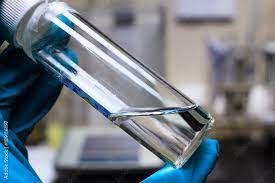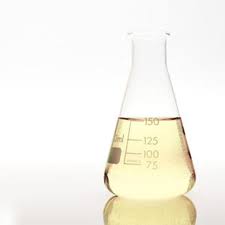**Gentle Surfactants Unmasked: The Skin-Friendly Science**
(What Makes A Surfactant Gentle)
Ever wonder why some soaps leave your skin feeling tight and squeaky, while others feel like a soft hug? The secret often lies in the surfactant. Surfactants are the workhorses in cleansers, making water wetter and lifting away dirt and oil. But not all are created equal. Some are harsh, stripping away too much. Others are gentle, designed to clean effectively without causing upset. So, what exactly makes a surfactant gentle? Let’s peel back the layers.
**1. What Defines a Gentle Surfactant?**
Think of surfactants as tiny molecules with two distinct personalities. One end loves water. The other end shuns water and clings to oil and dirt. This dual nature lets them break down grime and wash it away. A gentle surfactant does this job effectively but with a light touch. Its key characteristics are low irritation potential and minimal disruption to your skin’s natural protective barrier. Gentle surfactants avoid aggressively stripping away the skin’s essential lipids and proteins. They tend to have larger molecular structures. Or they carry a mild electrical charge that interacts less aggressively with skin proteins. Imagine them as careful cleaners, lifting dirt without scrubbing the floor’s finish raw. They clean well enough but know when to stop. They cause less stinging, redness, or that uncomfortable tight feeling. Common examples include Sodium Lauroyl Sarcosinate, Disodium Cocoamphodiacetate, and Decyl Glucoside. These are the molecular pacifists in your skincare.
**2. Why Gentle Surfactants Matter for Happy Skin**
Your skin isn’t just a covering. It’s a living, breathing barrier. Harsh surfactants act like bullies. They break down the skin’s natural oils far too effectively. This damages the lipid barrier. Think of this barrier as your skin’s brick wall. Harsh surfactants knock out the mortar holding the bricks together. This leads to trouble. Water escapes more easily, causing dryness and dehydration. Irritants can sneak in more easily, leading to sensitivity, redness, and inflammation. Over time, this constant assault weakens the skin’s defenses. It can trigger or worsen conditions like eczema or rosacea. Even for robust skin, daily use of harsh cleansers causes cumulative stress. Gentle surfactants offer a smarter approach. They clean effectively without declaring war on your skin’s defenses. This preserves moisture. It prevents irritation. It keeps your skin barrier strong and resilient. Healthy skin starts with respecting its natural balance. Gentle surfactants are key allies in this.
**3. How Formulators Create Gentleness**
Making a gentle surfactant isn’t just picking a mild one off the shelf. It’s a careful balancing act performed by cosmetic chemists. First, they select the mildest primary surfactants possible. Often, these are non-ionic types (like alkyl polyglucosides) or amphoteric types (like betaines or amphoacetates). These generally irritate less than traditional anionic surfactants like SLS. But anionic surfactants are powerful cleaners. So, formulators don’t always abandon them. Instead, they blend milder anionic surfactants (like sarcosinates or isethionates) with non-ionic or amphoteric ones. This blending dilutes the harshness. It creates a milder overall mix. The concentration matters too. Using a lower percentage of even a mild surfactant can help. Adding soothing and moisturizing ingredients is crucial. Things like glycerin, panthenol, allantoin, niacinamide, or natural oils get blended in. These counteract potential drying effects. They leave skin feeling comfortable, not stripped. The final product’s pH is tuned to match skin’s slightly acidic nature. This prevents further disruption. Testing is vital. Formulators rely on human patch tests and lab models to confirm the blend is truly gentle before it reaches you.
**4. Where Gentle Surfactants Shine (Applications)**
Gentle surfactants aren’t just a luxury. They are essential heroes in many everyday products. Baby washes and shampoos are prime examples. Infant skin is delicate and vulnerable. Gentle cleansing is non-negotiable here. Facial cleansers, especially those for dry, sensitive, or acne-prone skin, rely heavily on them. Acne cleansers need to remove oil without causing damaging irritation that worsens breakouts. Body washes designed for sensitive skin or conditions like eczema must use these mild workhorses. Even shampoos benefit. Many sulfate-free shampoos use gentle surfactants to cleanse hair without irritating the scalp. They are vital in intimate washes, where the skin is particularly sensitive. Pre and post-procedure skincare products use them. Think before laser treatments or after peels. Gentle micellar waters? Their cleaning power comes entirely from mild surfactants. Hand soaps used frequently throughout the day are better with gentle options. This prevents the dry, cracked hands many experience. Any product meant for daily use on sensitive areas leans on gentle surfactant technology.
**5. Clearing Up Gentle Surfactant Confusion (FAQs)**
Let’s tackle some common questions about gentle surfactants.
* **Are gentle surfactants as effective cleaners?** Yes, absolutely. They clean skin effectively. They remove dirt, sweat, and excess oil. They just avoid removing *all* the oil your skin needs to stay healthy. You might not get that extreme “squeaky clean” feeling. That feeling often signals barrier damage.
* **Do sulfate-free always mean gentle?** Not necessarily. “Sulfate-free” avoids specific harsh sulfates like SLS and SLES. But other surfactants used instead could still be irritating. Check the whole ingredient list. Look for the mild types mentioned earlier. Sulfate-free is a good start, but not a guaranteed pass for gentleness.
* **Can gentle surfactants lather well?** They absolutely can! Many mild surfactants produce rich, luxurious lathers. Think of the foam from a gentle baby wash or a high-end sulfate-free shampoo. Formulators often blend surfactants specifically to create satisfying foam without harshness. Don’t equate bubbles with harshness.
* **Are natural surfactants always gentler?** Not always. Some natural surfactants, like soapnuts or traditional soap (made from fats and lye), can be quite alkaline and stripping. Some plant-derived surfactants are very gentle (like decyl glucoside from corn/coconut). Others might be less so. Judge by the specific ingredient and its known properties, not just the “natural” label.
(What Makes A Surfactant Gentle)
* **How do I know if a product uses gentle surfactants?** Read the ingredient list (INCI names). Look for names like: Sodium Lauroyl Sarcosinate, Disodium / Sodium Cocoyl Glutamate, Decyl Glucoside, Lauryl Glucoside, Coco-Glucoside, Sodium Cocoyl Isethionate, Cocamidopropyl Betaine, Disodium Cocoamphodiacetate. Products labeled “for sensitive skin,” “fragrance-free,” or “dermatologist-tested” are more likely candidates. Patch testing new products is always wise if you have reactive skin.
Inquiry us
if you want to want to know more, please feel free to contact us.




